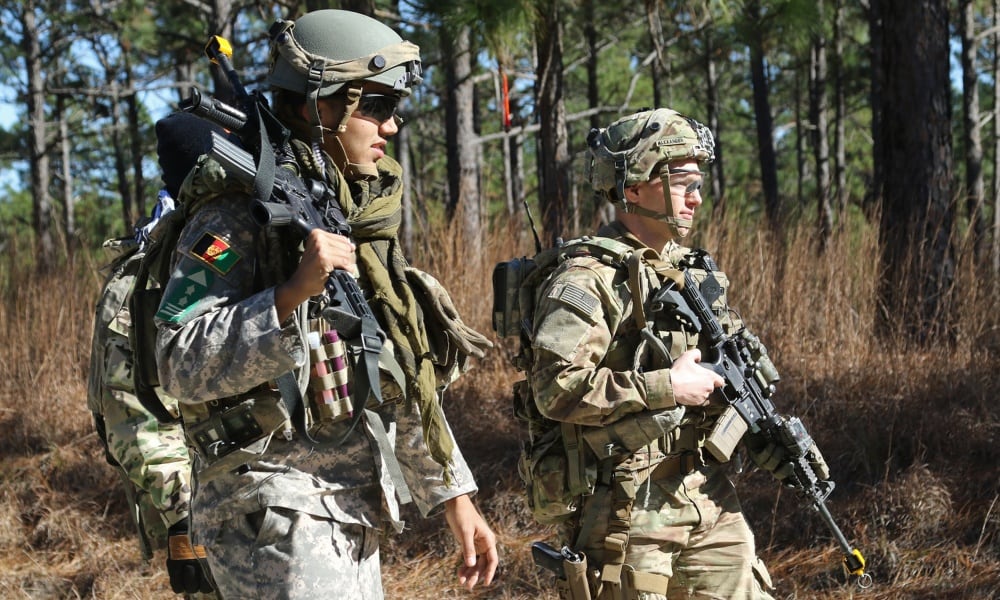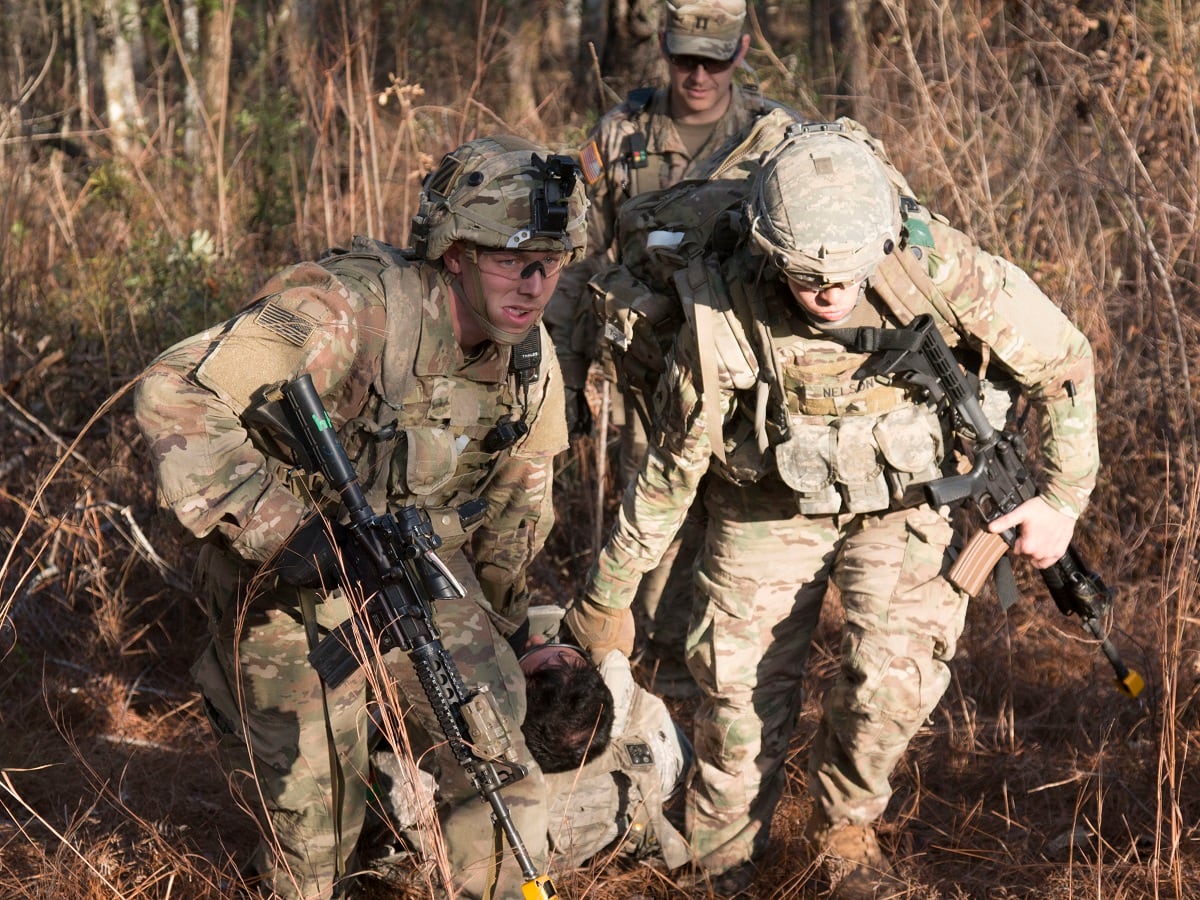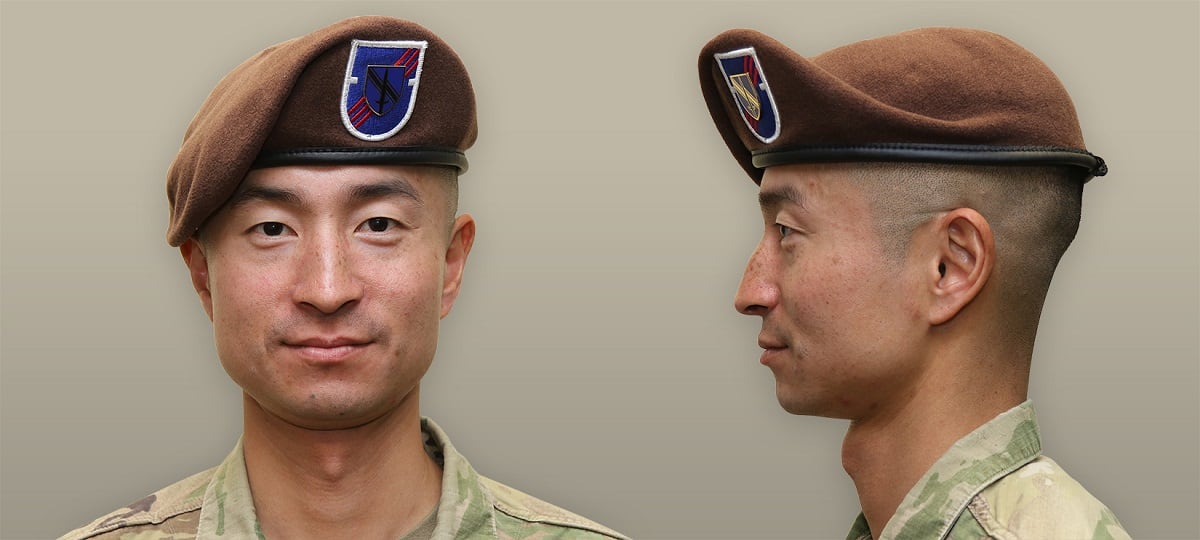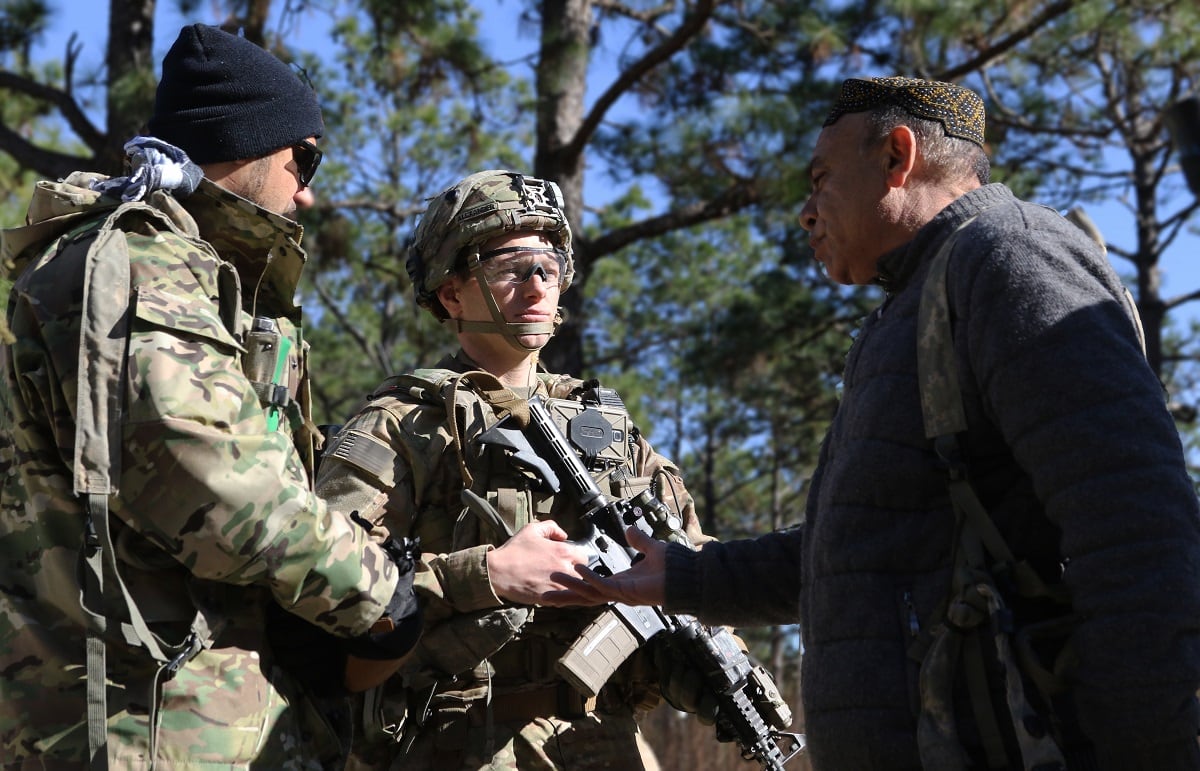FORT POLK, La. — The days are numbered for the Army’s Universal Camouflage Pattern, which has a wear-out date approaching in 2019, but there was a whole lot of it walking around the Joint Readiness Training Center in January.
It was not because soldiers were putting off replacing their uniforms, but because with an Afghan flag slapped on the shoulder, they made the perfect costumes for 10th Mountain Division soldiers to play the role of Afghan troops.
JRTC has trained dozens of brigades for Afghanistan deployments, and keeps a retinue of both local Louisiana and native Dari and Pashto-speaking actors to simulate in-country villages.
But for the soldiers of the 1st Security Force Assistance Brigade, who are preparing for their first deployment as combat advisers to local national forces, the contractors weren’t enough.
So 10th Mountain sent a bunch of its 1st Brigade troops to play Afghan forces, and in a choose-your-own adventure type of scenario, help the SFAB soldiers develop their allies and guide them through key leader engagements and high-level target captures.
Rather than their previous training center rotations, when units were largely planning for combat operations, soldiers said, members of the SFAB’s Combat Adviser Teams are vastly outnumbered by actors as they plan and execute missions during this rotation.
“Last time I was here, it was definitely different,” Staff Sgt. Robert Senn, a cavalry scout by trade, told Army Times. “It was more of a direct-action rotation. Not a lot of interaction with higher-ups on the other side. You were partnered but not as integrated with the actual planners and leadership.”
The training is broken up into seven two-day rotations: one day of planning and one day of execution.

On Day 1, SFAB soldiers meet with their assigned Afghan kandak, the Dari word for battalion.
CAT leaders meet with kandak leadership, generally native-speaking Afghan role-players — many of whom emigrated from the country to escape the Taliban, or came over after serving as interpreters for American forces.
SFAB leaders speak to kandak leaders through an interpreter. The kandak’s soldiers are played by those 10th Mountain guys in UCP, and they’re speaking English — but to make it more real, they also use interpreters.
In many cases, an “Afghan soldier” is speaking English to a translator, who is slightly altering the translation for the SFAB team.
Somehow, no one breaks character.
“I think if it were one-sided, it would be really difficult,” Capt. Christopher Hawkins, an SFAB company executive officer, told Army Times in January. “They keep character perfectly, and so it’s really easy for us to fall into it.”
At Forward Operating Base Warrior, the CAT and kandak meet up in a planning room. In one corner, the Afghan commander and his SFAB counterpart have a private meeting.
In another area, kandak and SFAB officers drink tea and munch on pistachios.
In the center of the room, a CAT senior adviser and his soldiers stand around a table with “Afghan soldiers” using a map to plan the next day’s mission.
Each 10th Mountain soldier has a character profile, so he knows his backstory and has a handful of things about his life to discuss with the SFAB counterparts. He also has some options, as far as whether he’s squared away or more of a challenge.
“The kandak, they will be much more forthcoming, much more cooperative, if the adviser team is effective in building rapport,” Lt. Col. Ryan Seagreaves, the cavalry squadron senior trainer at JRTC, told Army Times. “If they’re not very effective in building rapport, the cooperation won’t be at the same level, and they know how to adjust.”
Later that day, SFAB teams will lead their kandaks through building-clearance and other exercises, as 10th Mountain troops pretend they don’t really know what they’re doing, and make decisions about whether they’ll improve along the way.
“It adds another level of stress that your standard job might not have,” said Capt. Justin Shaw, a team leader. “Leading a team, advising partners, maintaining rapport.”
Green-on-blue
On Day 2, the CATs and their Afghan army kandaks head out for a mission.
In the Jan. 19 iteration, they’re executing a warrant in the village of Khaista for a terrorism financier who happens to be good friends with the village’s mayor.
“A couple of things we’ll make them negotiate,” Seagreaves said. “One, they’ll have a break in contact with their kandak [in transit], so they have to work through linking up with them in the middle of the mission.”
Before they even get to the village, they’ll face an ambush, he added.
“I think that the good thing about the way that they built the scenario here and the rotation … each one of them has a kinetic piece to it,” CAT team leader Capt. William Webster said. “It’s not complex, but it’s some kinetic piece that we have to react to quickly, that takes us off what the mission plan was.”
The team will also have to keep themselves safe and coordinate anything that happens to their Afghan counterparts during the mission, which is to convince the mayor to give up the financier.
“During that event, there will be a green-on-blue attack with one of the local police,” Seagreaves said. “It’s not just a green-on-blue attack. The insider threat will incur multiple casualties. There will be a U.S. casualty, a local casualty, an ANA casualty.”
Each force is meant to use their own medevac capabilities, so the SFAB will have to work through getting their own guy potentially helicoptered from the area, while figuring out where to treat the local and what kind of ANA recovery is available. In many cases, Seagreaves said, the ANA will only have vehicles for medevac, or maybe one of a limited number of aircraft.
“We’re focusing a lot on improvised methods of movement, how to make improved tourniquets,” said Sgt. 1st Class Daniel Mayzik, a CAT noncommissioned officer-in-charge. “Because we’re not expecting them to show up and them to have talon litters and skedcos and [combat lifesaver] bags and all of that stuff. What can we pull from around us to move this guy from the point of injury, to the point of care, to the point of evac?”

Each CAT is accompanied by an infantry squad from Task Force 1st Battalion, 28th Infantry Regiment, which is part of the 3rd Infantry Division, at Fort Benning, Georgia. As force protection, they’re not members of the SFAB, but they will deploy with them.
“When I found out they were doing something a little bit different, I was interested in going,” Staff Sgt. Nicholas James, who has previously advised Iraqi soldiers, said. “I feel like I have a lot of experience that I’d like to share.”
The force protection squad kicks into high gear at Khaista when, as the kandak and CAT lead the key leader meeting without their target, they come under fire in the middle of the village.
“There are indicators that the adviser team could potentially pick up on,” Seagreaves said, that would let them know that an attack is probably coming. “Sometimes, they might pick up on those indicators and take steps to end the engagement earlier and get their people out of there. Sometimes, they don’t. It’s free play, so we know what the injects are going to be, but we don’t know what they’re going to do.”
And, Seagreaves said, if they’re able to anticipate the threat and head out of the village early, there will be an attack on their way home.
Building rapport
Though they get some simulation time, the real challenge for the SFAB will be forging relationships with their Afghan counterparts, and hopefully leaving the ANA units more capable and organized than they found them.
“You have to find the finer points in where two cultures meet. We have some commonalities, but if you think about it in the aspect of what the Army’s done around the world in the past 20, 30 years … the NCO corps, in the aspect of how we think about it, is really a Western concept,” Webster said.
The European-style NCO corps as the U.S. Army knows is not worldwide, he added, and particularly in Afghanistan, the army is very officer-centric.
If Afghan soldiers lack discipline, for instance, the SFAB is not there to preach the value of unit PT and marching in formation.
“The way you can shape it is, you show them an option of gearing toward something, and then you show them the alternative of what could happen if we don’t go towards that direction,” Webster said.
And, Mayzik said, impressing upon Afghan NCOs that discipline issues, for example, are something they can take charge of for the greater good.
“We’ve had 200 years of institutionalized NCO leadership that we can draw back on, and they’re still new to that concept,” he said. “We’re focusing on security. Establishing a legitimate NCO corps is probably something for future rotations to take care of.”
RELATED

The Army plans to stand up six SFABs in all, with a second activating at Fort Bragg, North Carolina, early this year, and a third scheduled for fall 2018.
“To be able to have input into the development of this, and to be able to shape how it matures and grows, has absolutely been a rewarding experience,” Shaw said.
Meghann Myers is the Pentagon bureau chief at Military Times. She covers operations, policy, personnel, leadership and other issues affecting service members.





